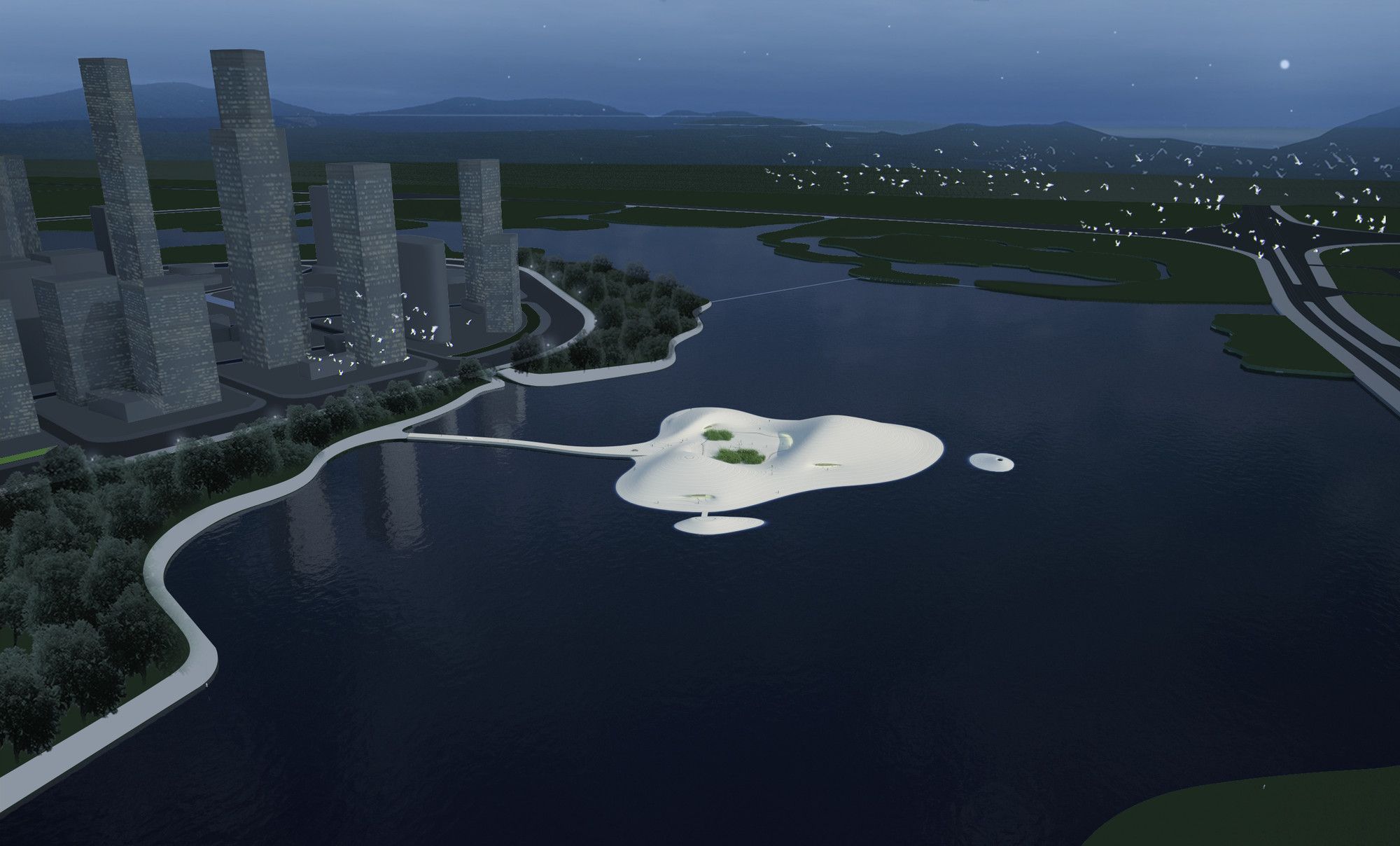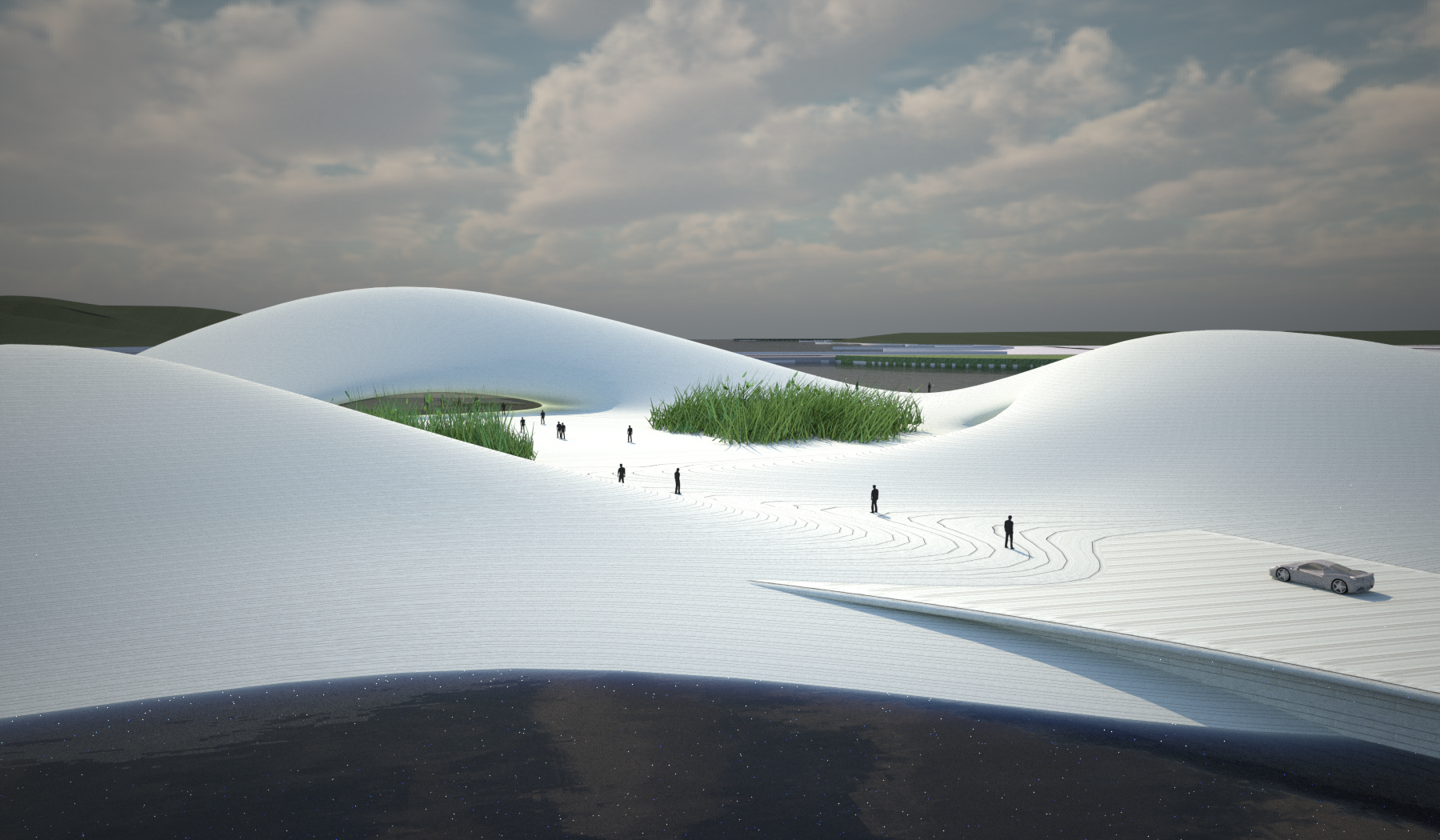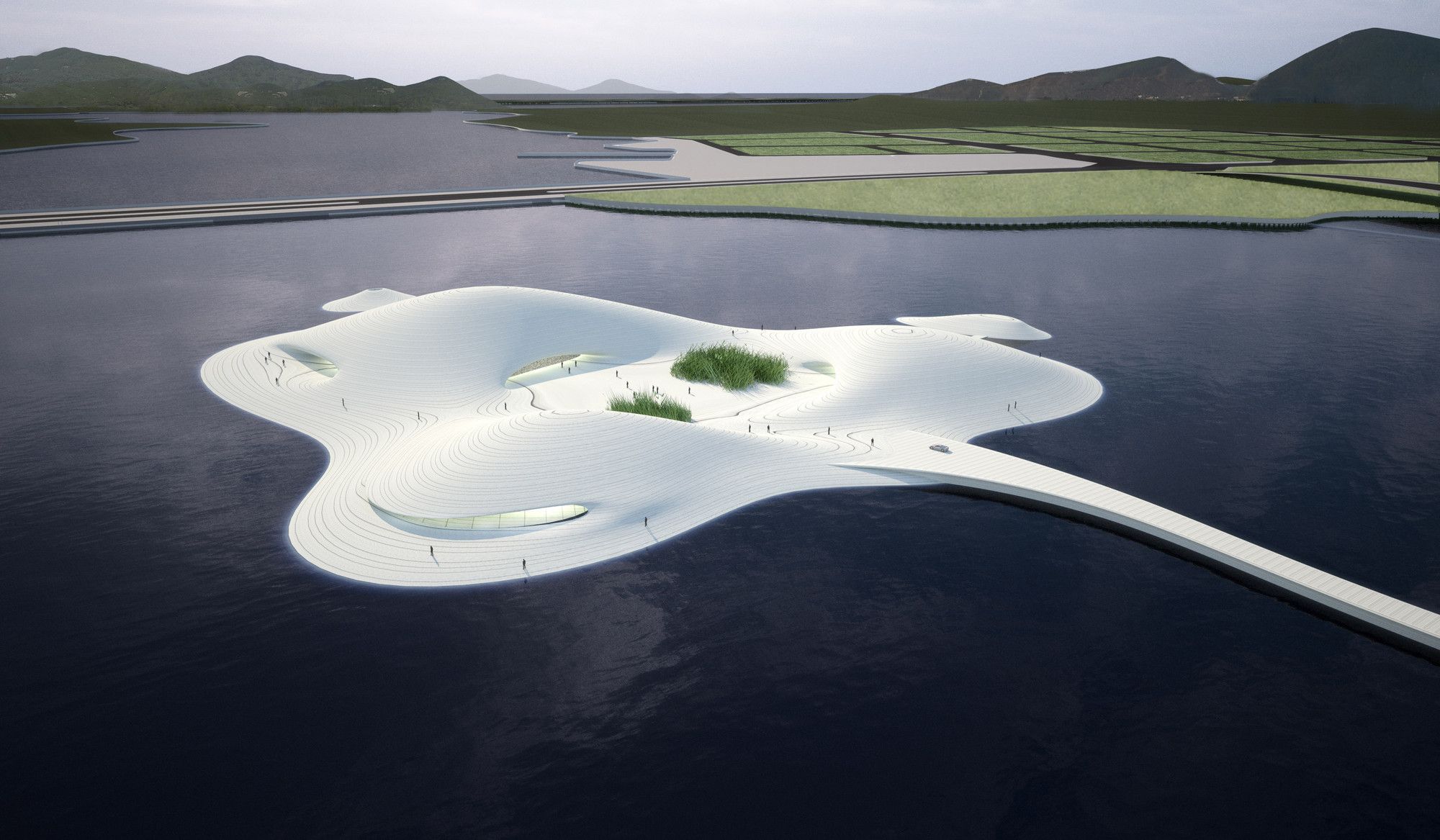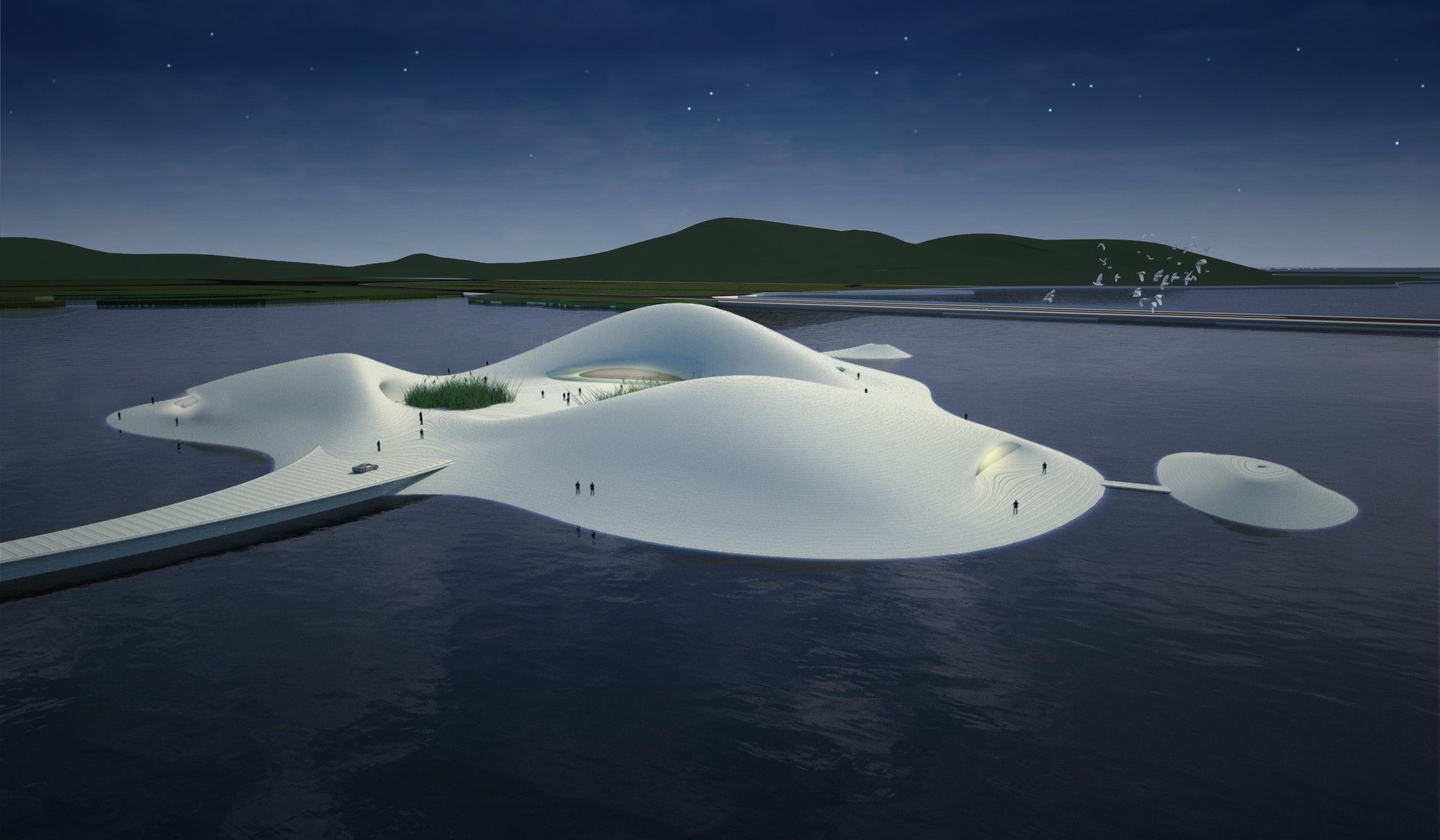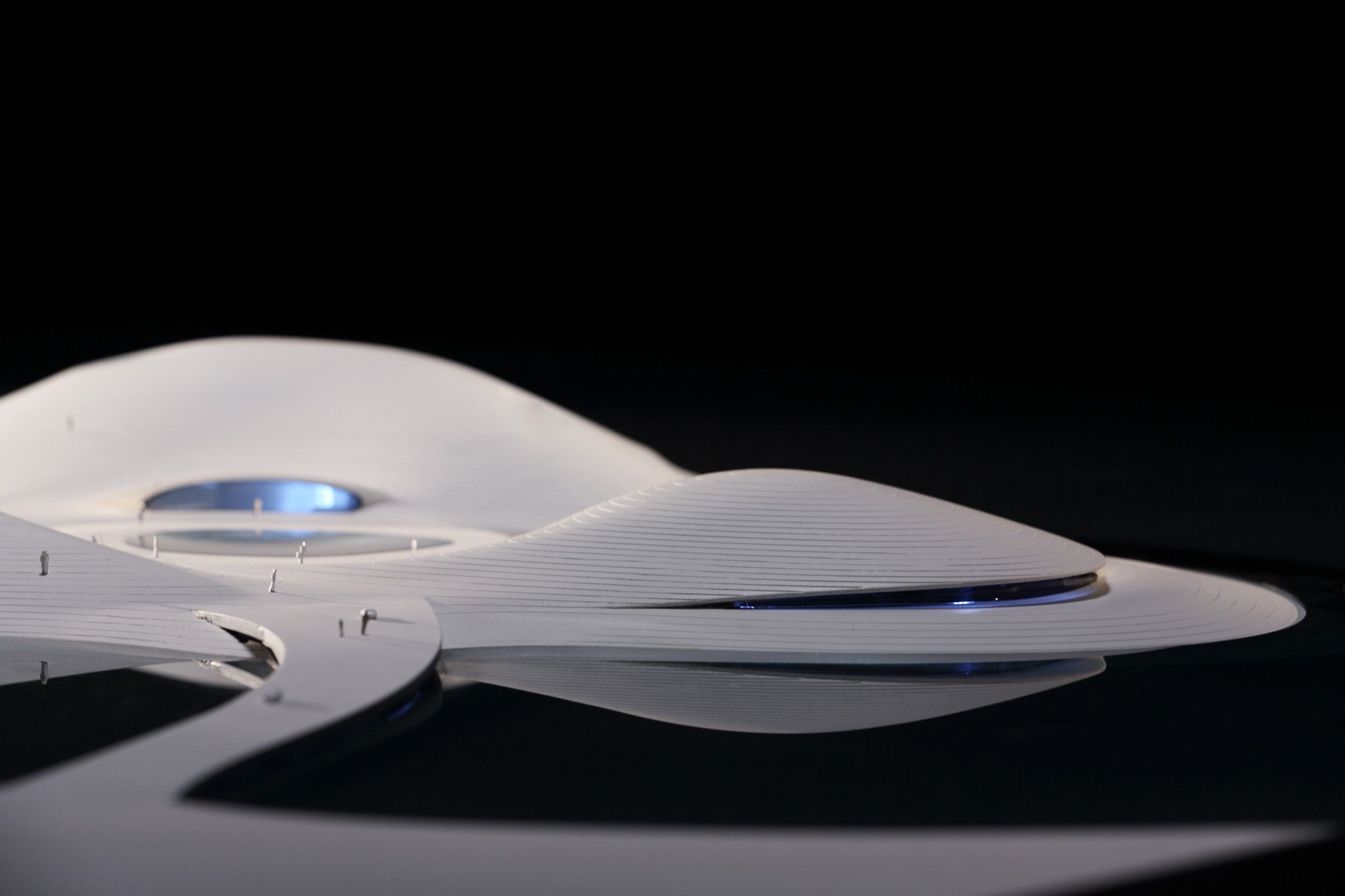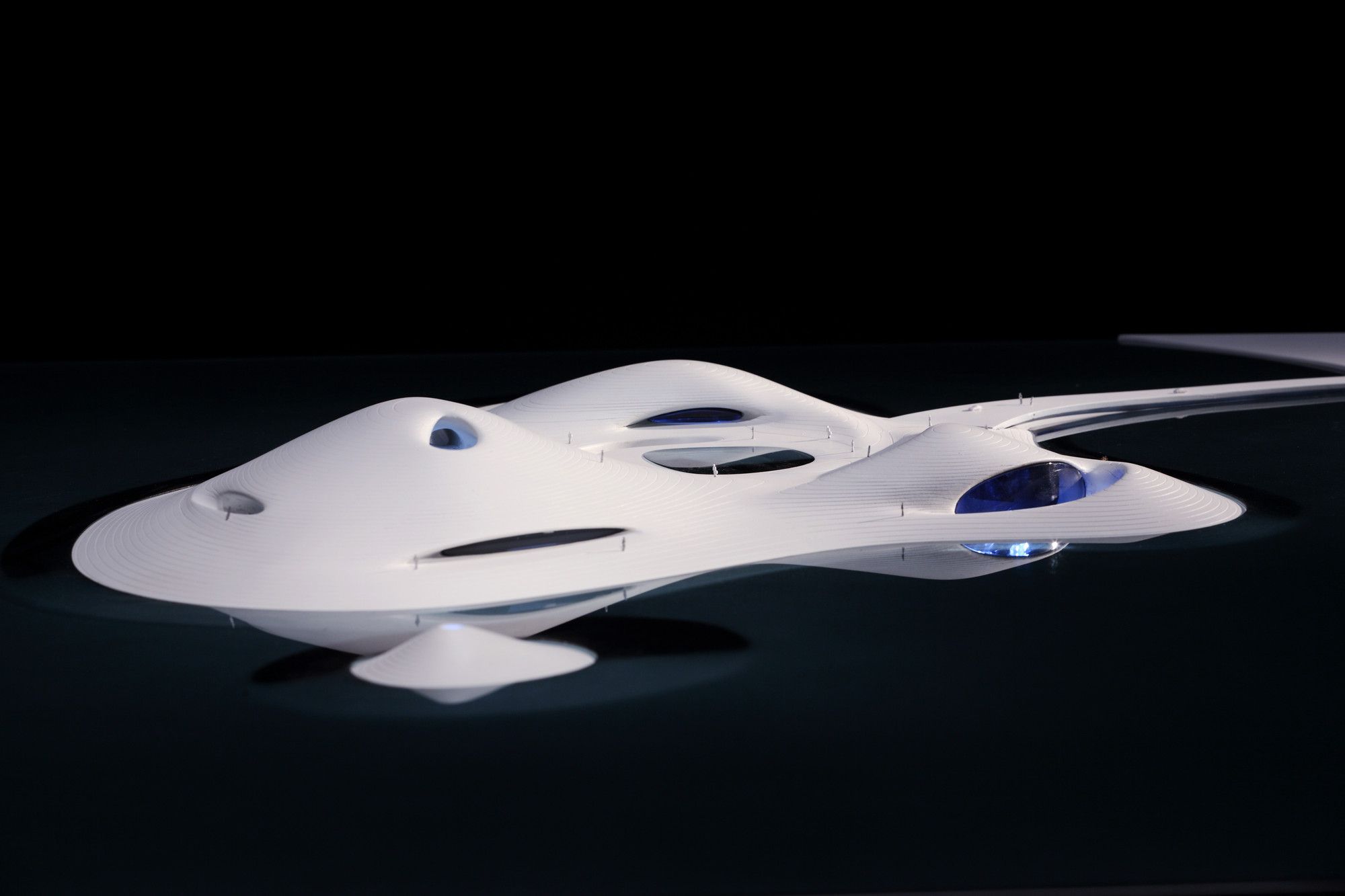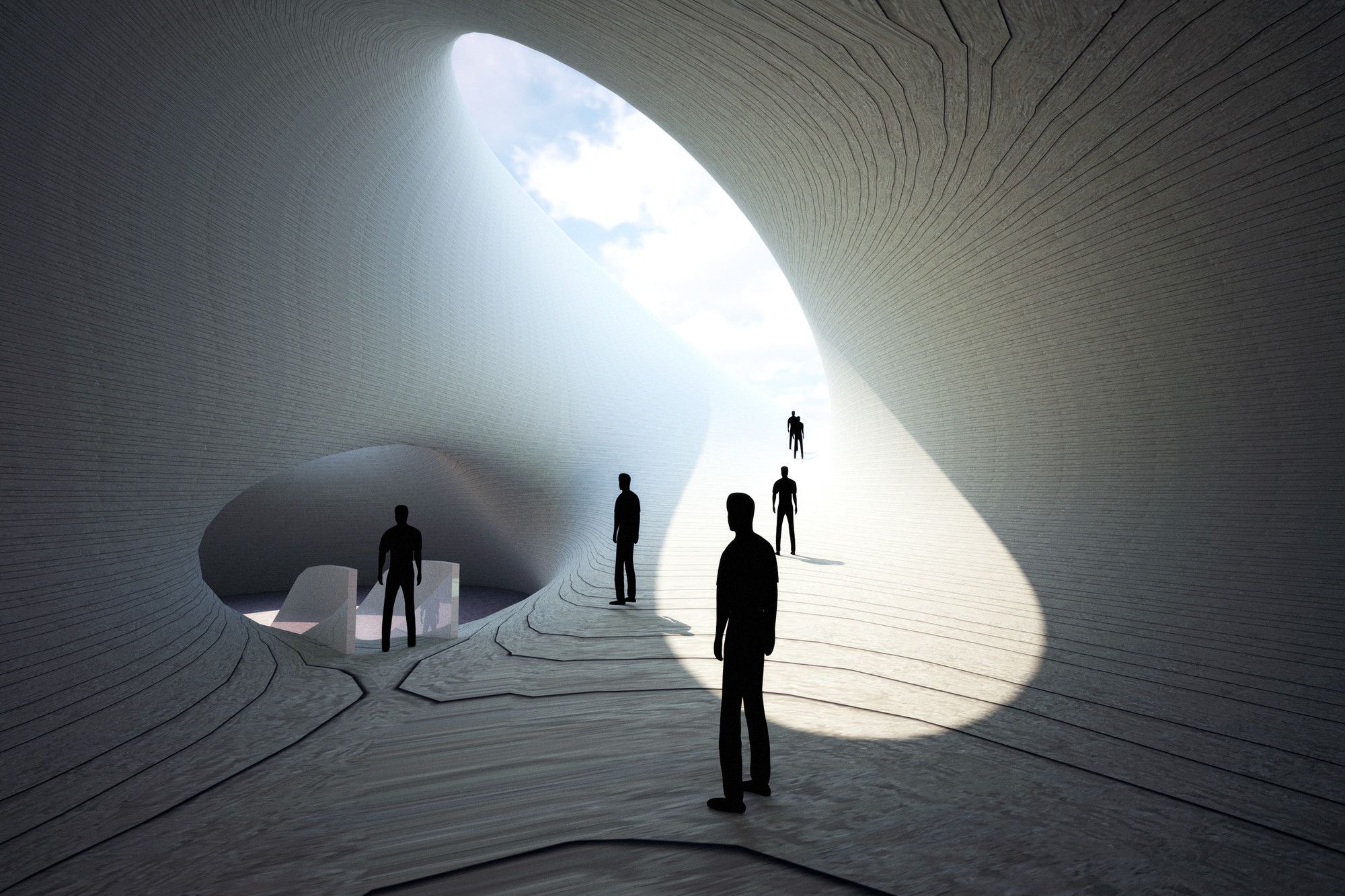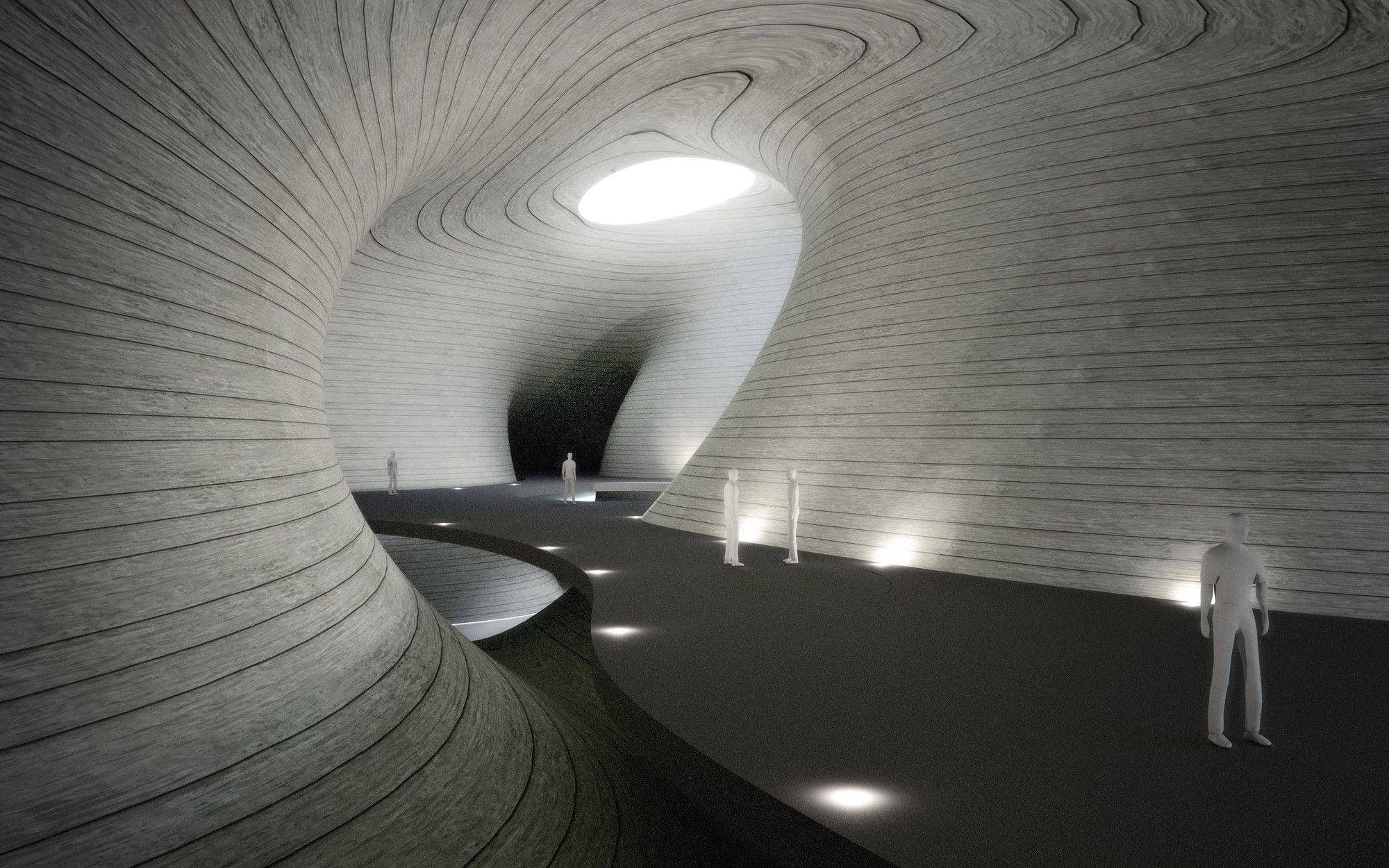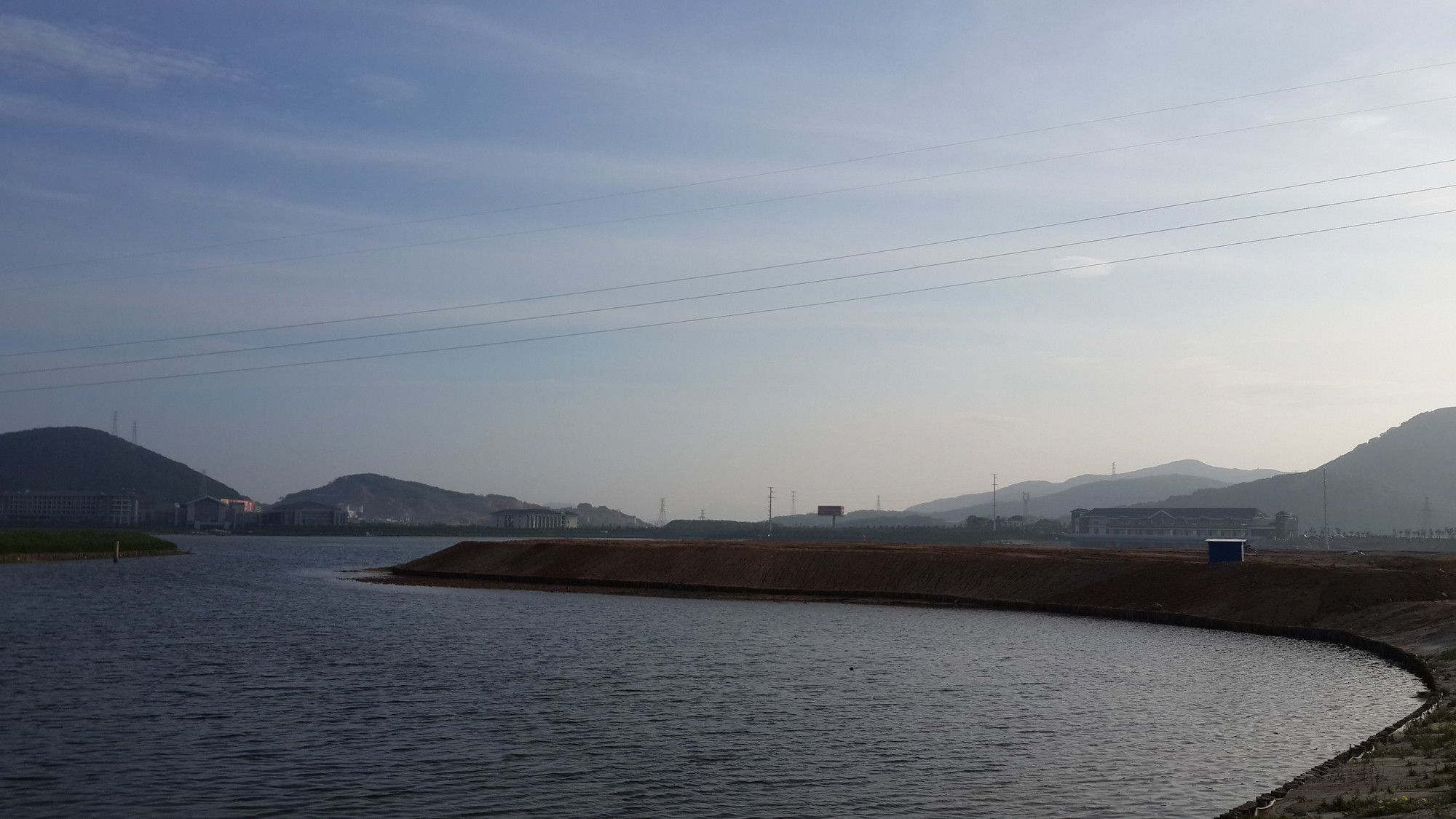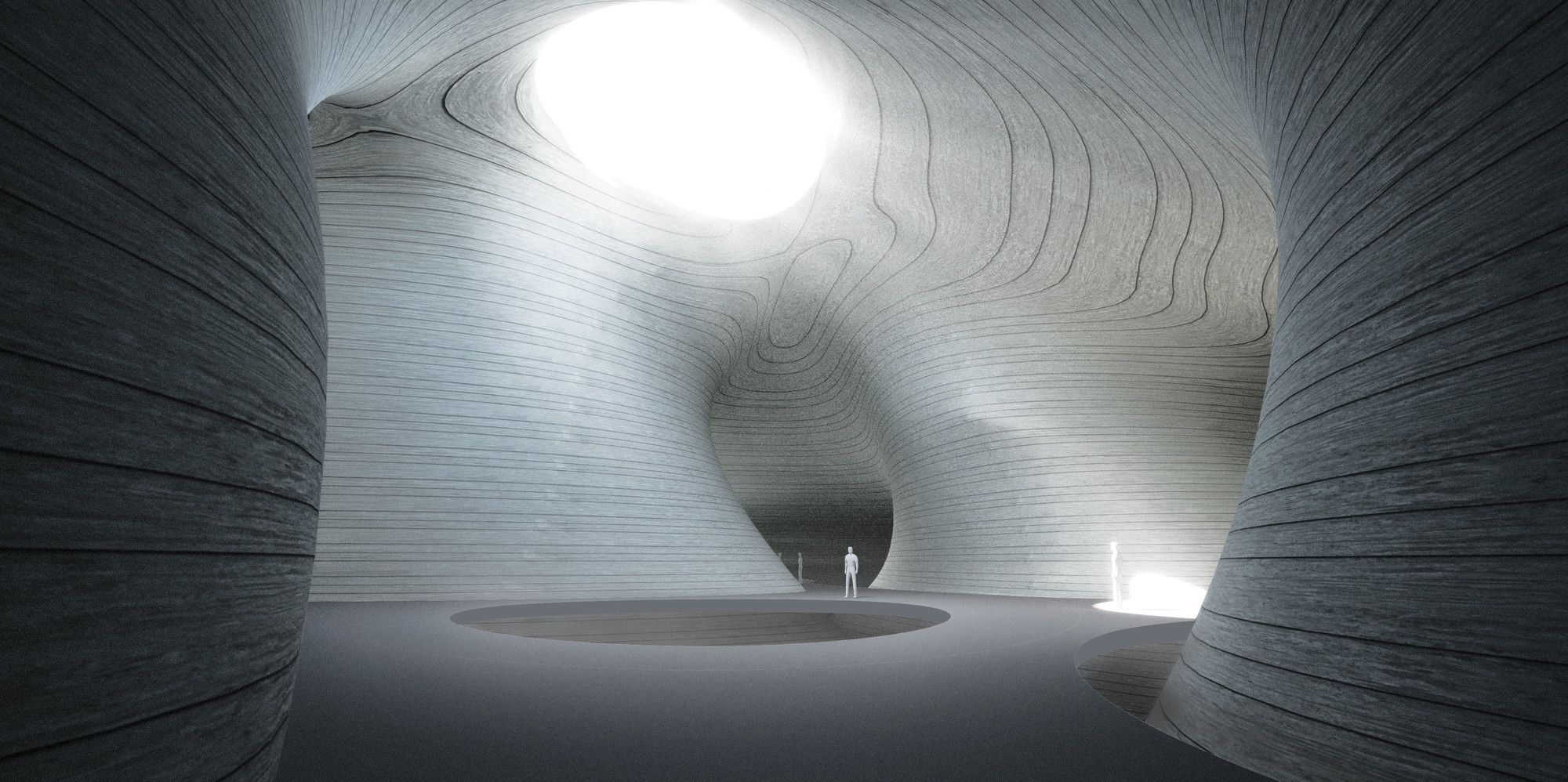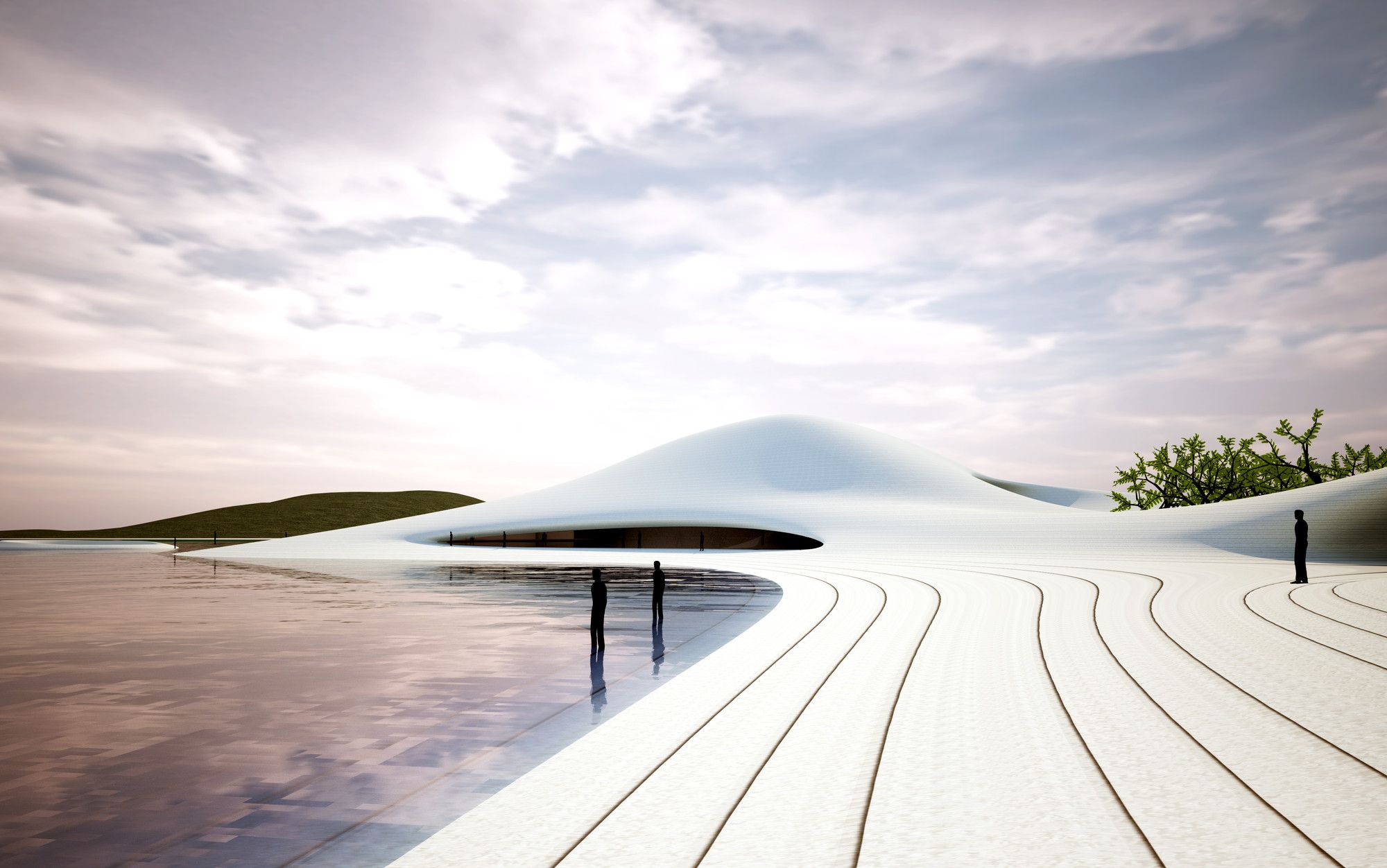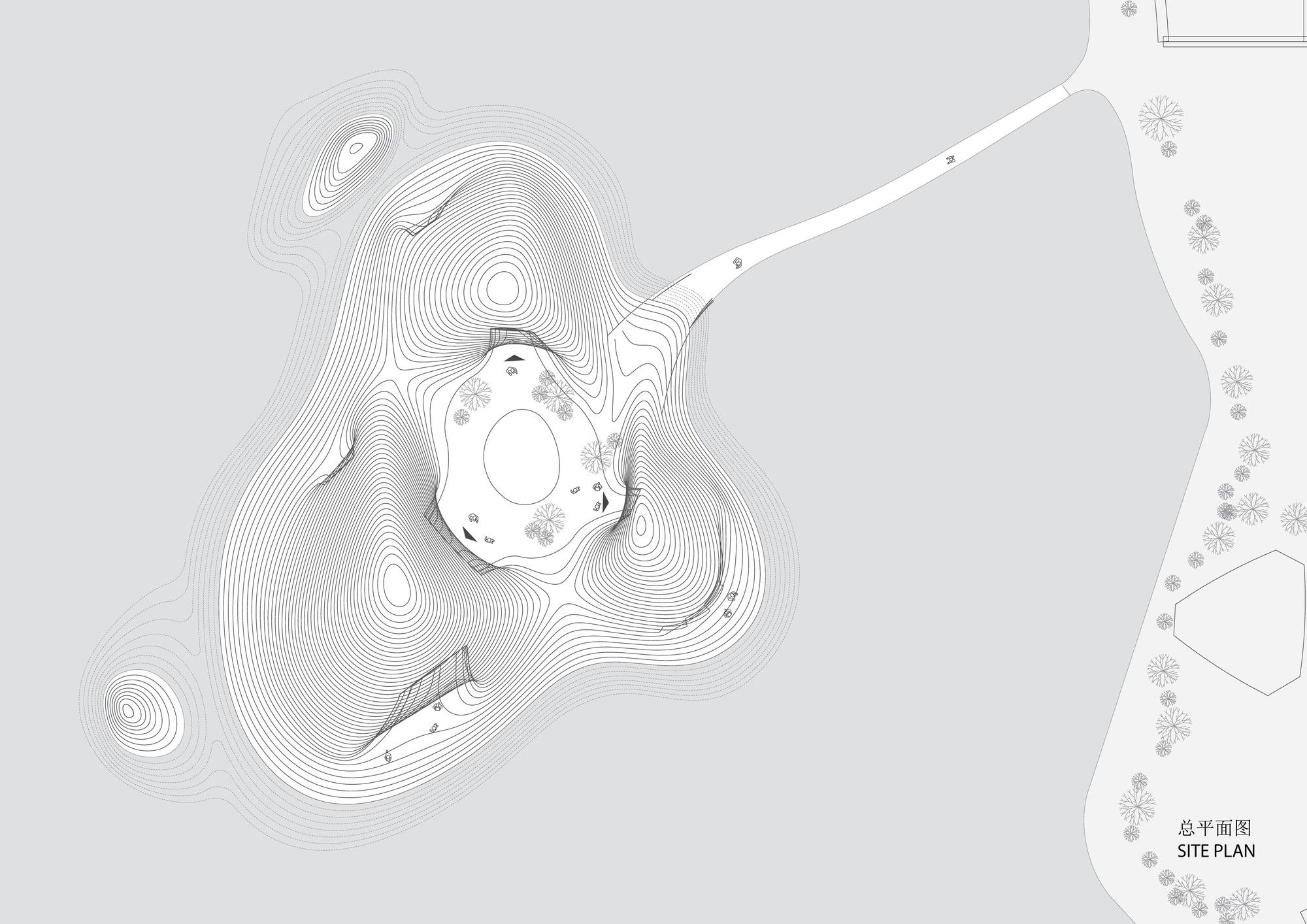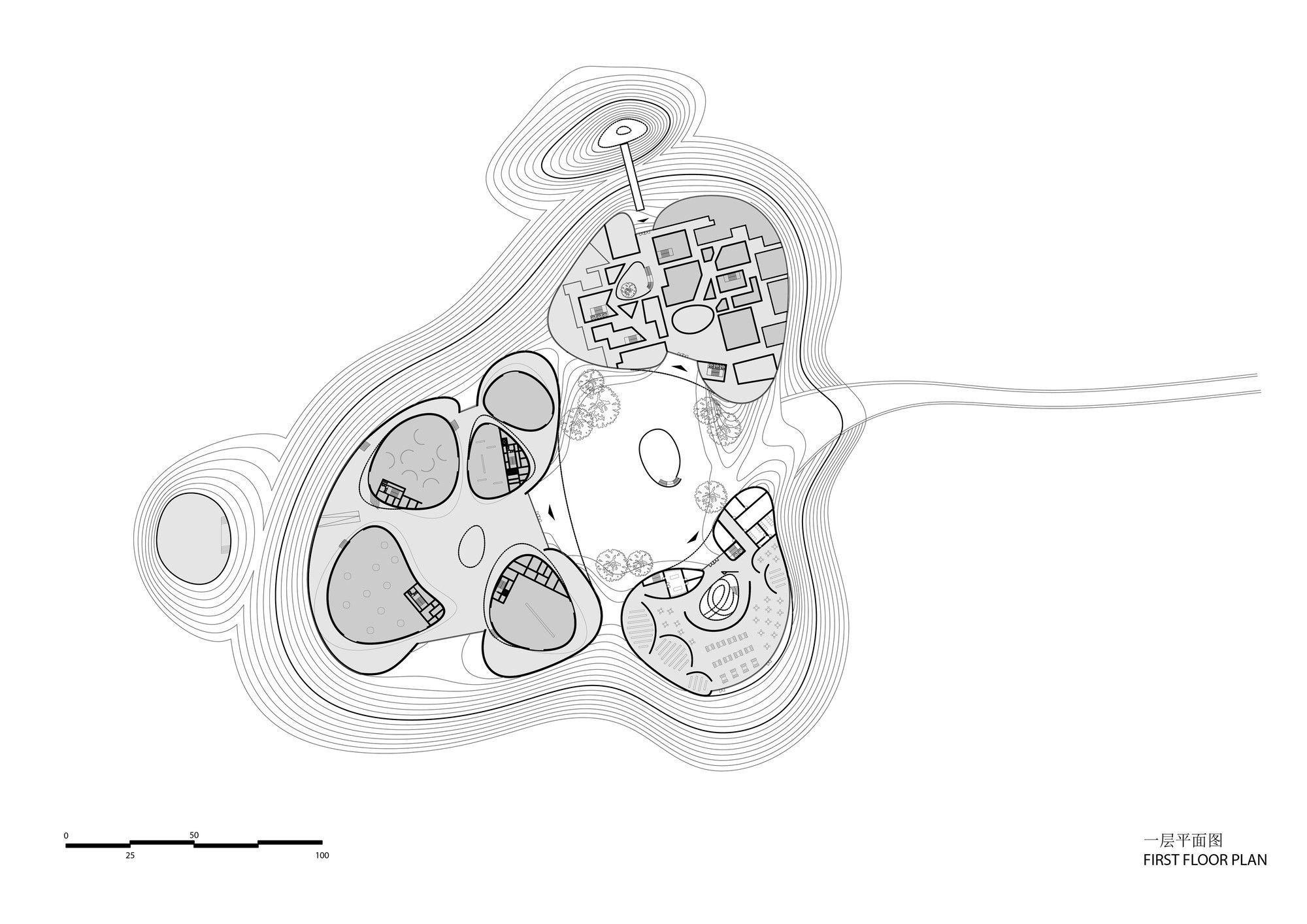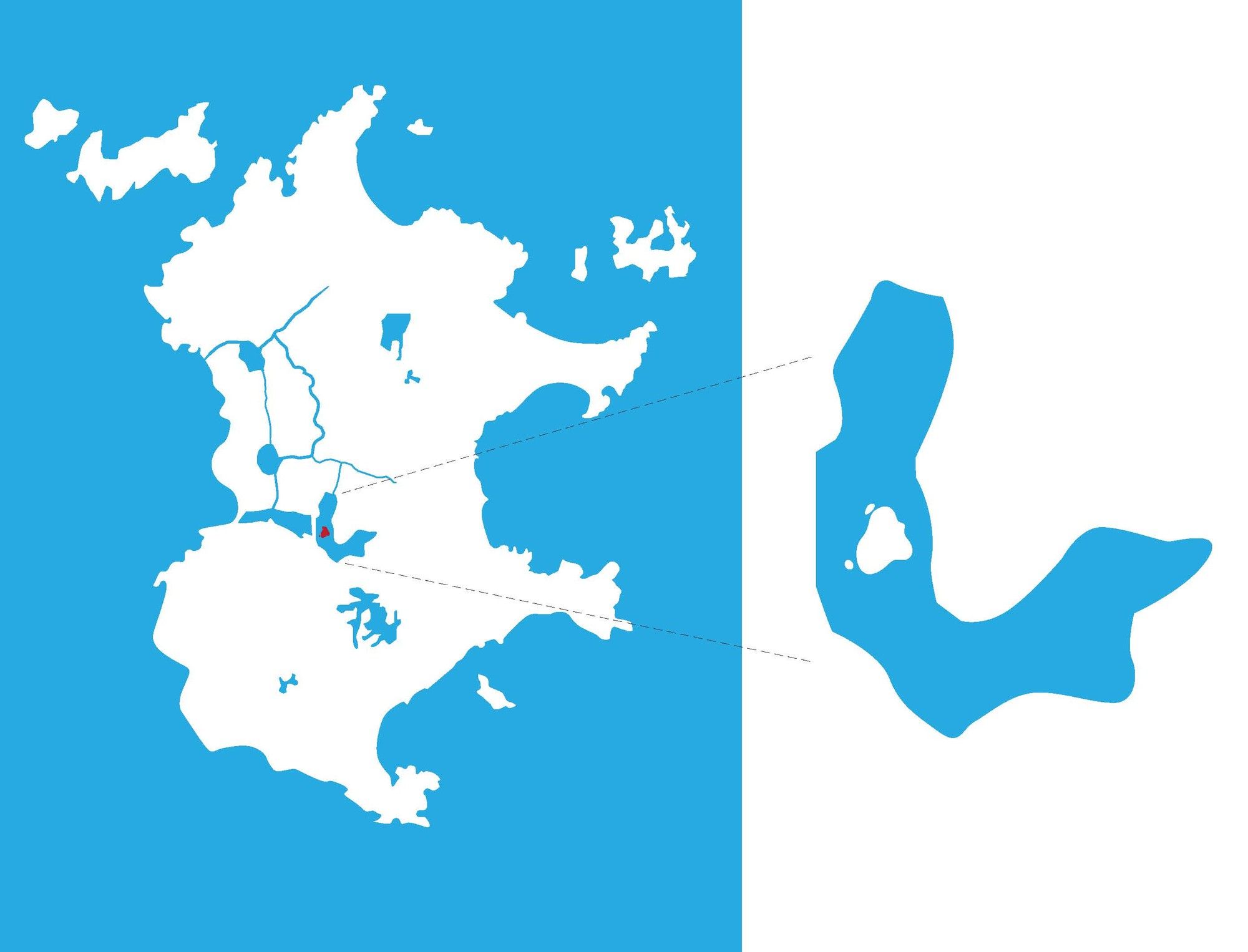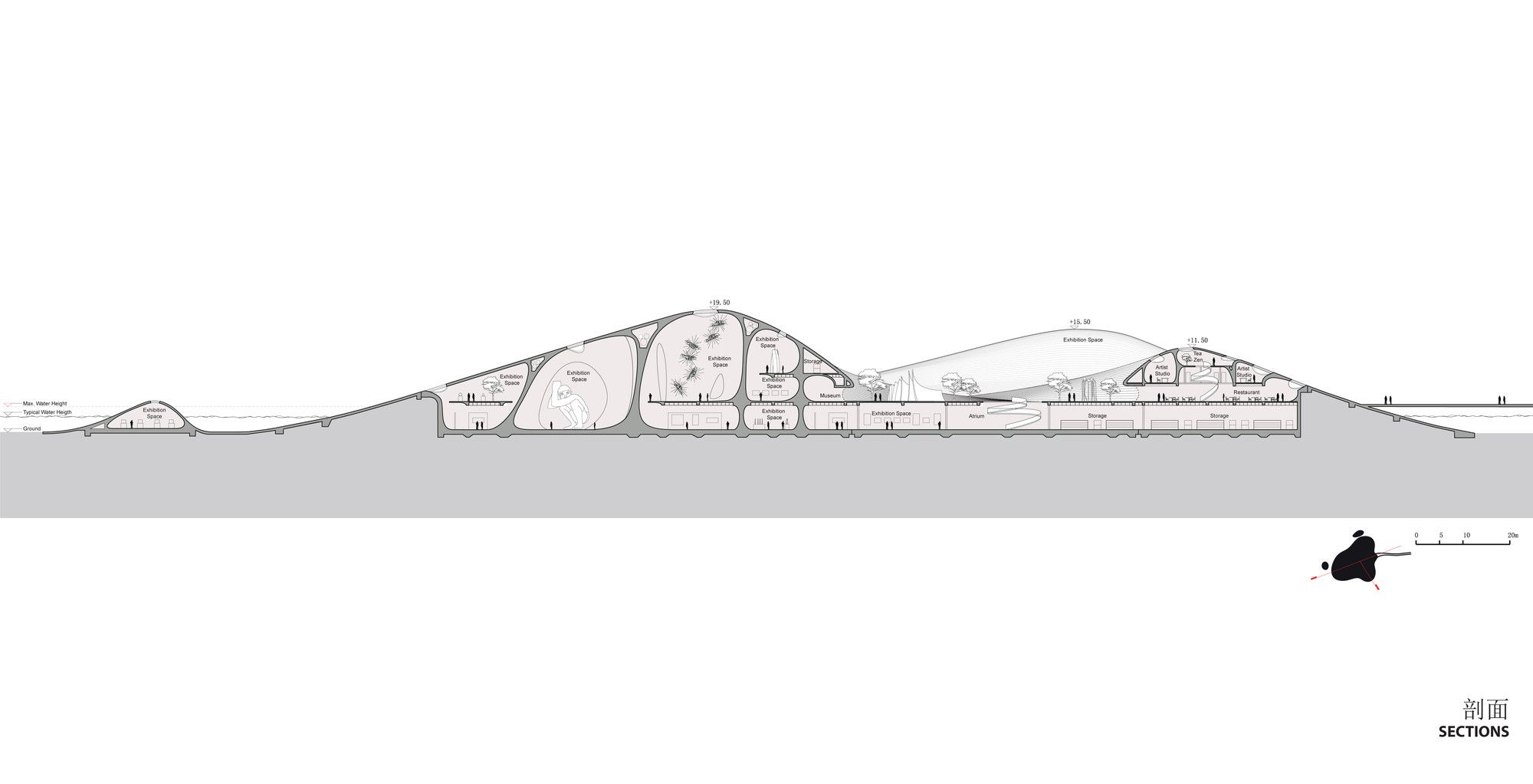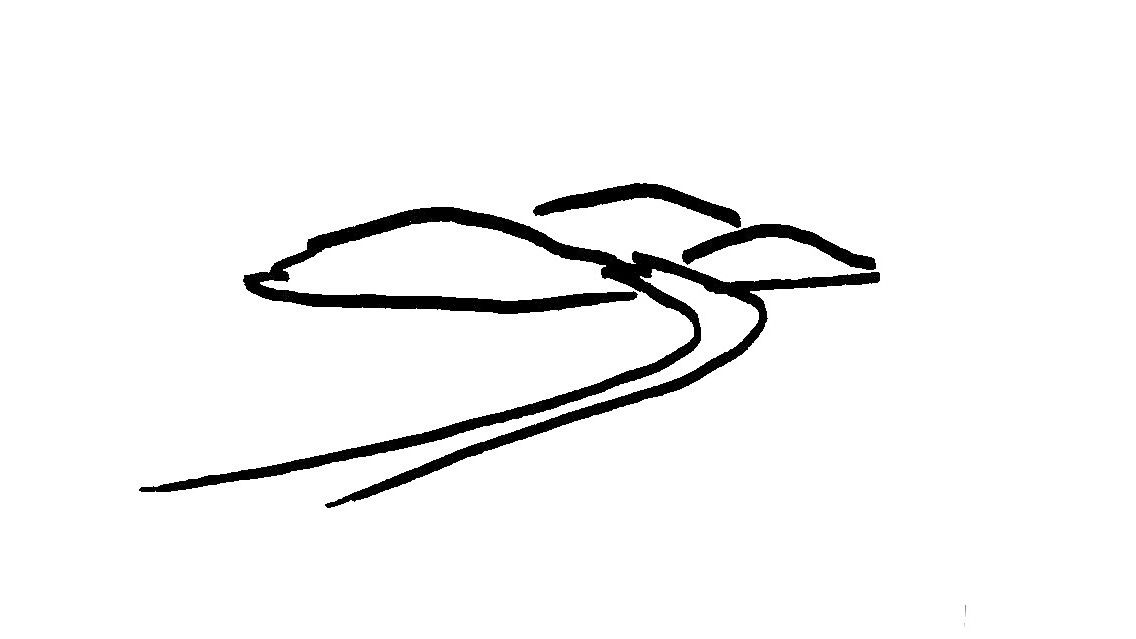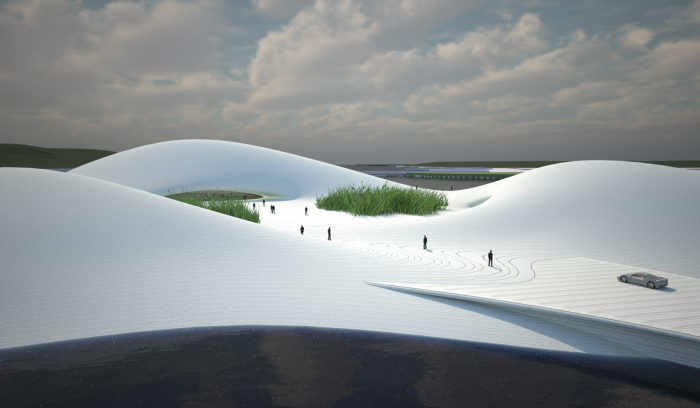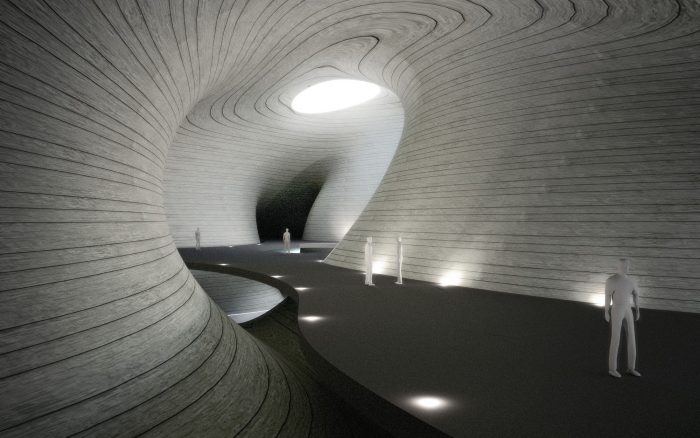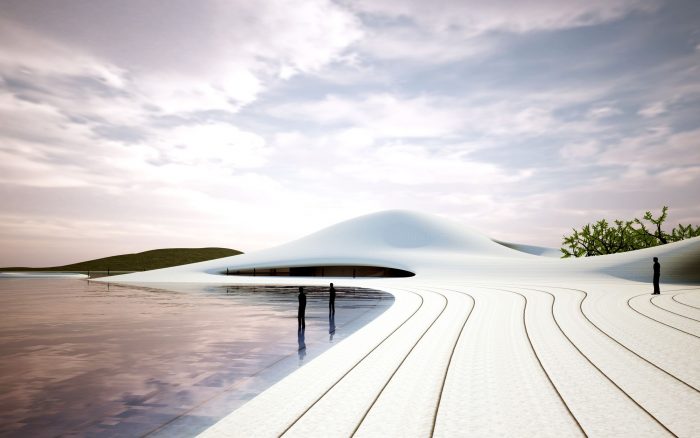The Chinese architecture firm MAD recently revealed plans for their new Pingtan Art Museum. At a projected 40,000 m², it will be one the largest museums in Asia, displaying thousands of works and pieces with national historic and artistic importance.
The section of the building is a compelling one; a rounded, sloping form is the face it shows to its visitors when they approach, and rounded, easing volumes are found upon entering. The several ways with which the architects confront the meshing of the curvilinear volume with the rationale of building systems are intriguing in their situational democracy. Some feature plane-like floors held suspended above and within the curves.
 For others, the path of ambulation is intermingled with the smooth curvature of the cast concrete shell. Here, the space has a natural, cave-like atmosphere, with light casting long through skylights above. These are, of course impressions taken from renderings. If they are to be translated directly when the museum is built, it will not only be one of the largest museums in Asia, it will be- in this author’s opinion- one of the most interesting architecturally and worth visiting. Below, a project description provided by the architects tells more of the project.
For others, the path of ambulation is intermingled with the smooth curvature of the cast concrete shell. Here, the space has a natural, cave-like atmosphere, with light casting long through skylights above. These are, of course impressions taken from renderings. If they are to be translated directly when the museum is built, it will not only be one of the largest museums in Asia, it will be- in this author’s opinion- one of the most interesting architecturally and worth visiting. Below, a project description provided by the architects tells more of the project.
Being the largest island in the Fujian province, Pingtan is also the Chinese island nearest to Taiwan. In 2010, the ‘Comprehensive Experimental Zone’ project in Pingtan was officially launched; the island is expected to become the primary location for trade and cultural communication between Taiwan and the mainland in the foreseeable future. The island, which is currently home to fisheries and a military base, will quickly be transformed into an large-scale urban development zone.
This new city, which is still under planning, will hold the museum at its center. The museum itself acts as a smaller scale island off the Pingtan Island itself, connected to land only by a slightly undulating pier, which, in turn, bridges artificial and natural, city and culture, as well as history and future. The museum represents a long-lasting earthscape in water and is a symbol of the island in ancient times, with each island containing a mountain beneath it.
The island is firstly a public space that is then turned into a museum. The sea, the beach, the oasis and the slope all interconnect with each other, forming a harmonious capacious space with the mountains in the distance. The building is constructed with concrete that is blended with local sand shells. The indoor space, formed by the rise and fall of the formal movements, looks similar to ancient caves. Pingtan Art Museum is built in a landscape setting of an urban city. After its completion, it will create a new space for the city and the city’s inhabitants and further inspire them to reflect on the impact made by time and nature.
Pingtan Art Museum is built in a landscape setting of an urban city. After its completion, it will create a new space for the city and the city’s inhabitants and further inspire them to reflect on the impact made by time and nature.
